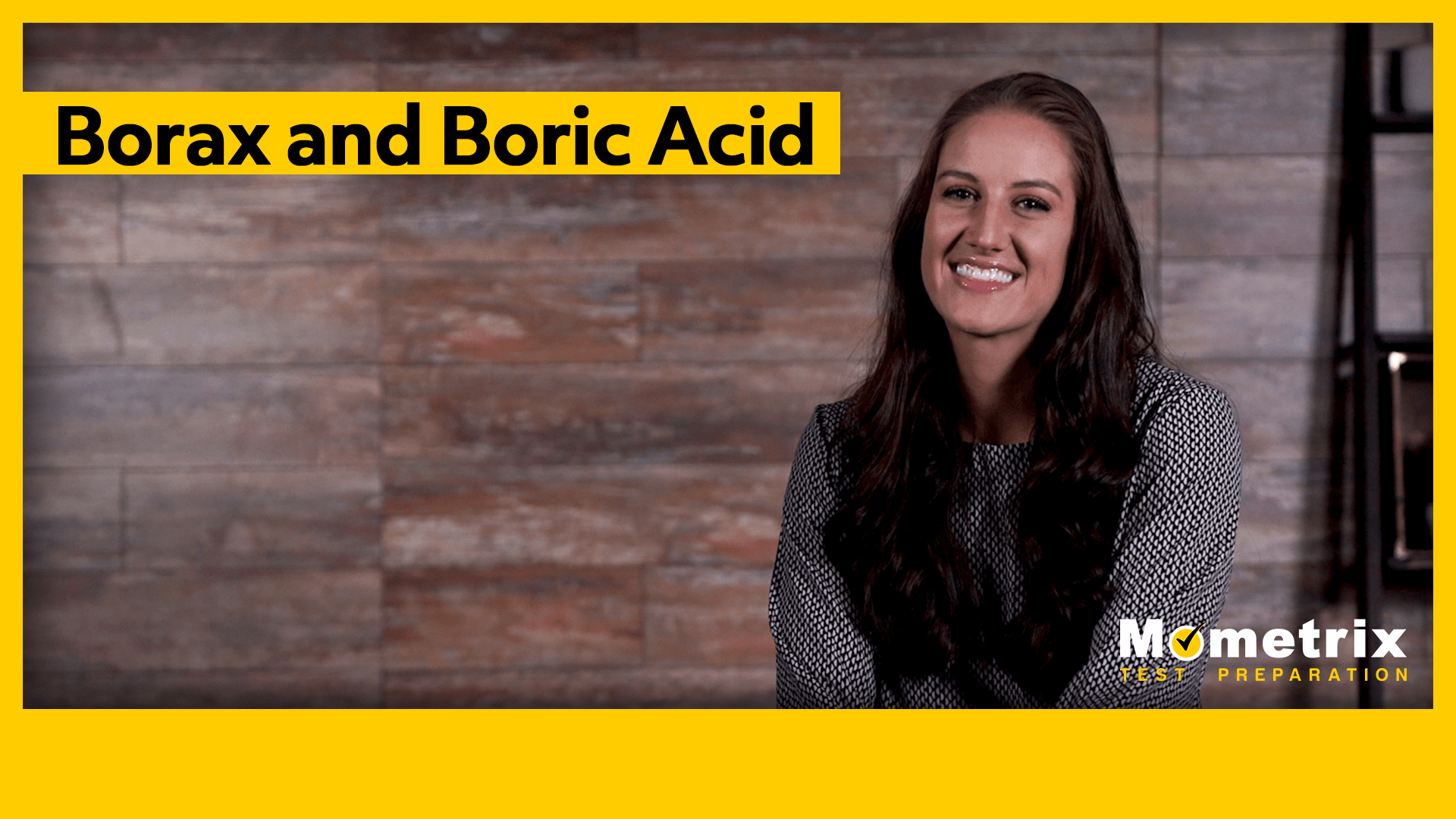
Hey guys, welcome to this Mometrix video on Boric Acid and Borax.
In this video, we will take a look at where each are naturally present, how each are formed, a few of their uses, and can you eat them?
The Chemistry of Boric Acid and Borax
So, first, where do boric acid and borax occur in nature? Boric acid occurs in small traces in certain fruits and beverages like apples and bananas, it’s found in almonds and peanuts, it’s found in beer and wine, and it’s found in leafy vegetables. You can also find boric acid along with its salt in seawater. Now, borax is the salt of boric acid. It materializes in dry places from the evaporation of salt lakes.
Now, how are boric acid and borax formed?
How is Boron Formed?
Well, both are a boron compound. However, boron will never occur naturally in just elemental form. It will always be bonded with another element. The reason this is the case, is because Boron is a vulnerable element with only 3 valence electrons, and it wants 8, so it’s going to bond with another element that is looking to acquire some electrons. There are a lot of those. In this case, we’re going to say that it bonds with Bromine. The product is going to be Boron Tribromide. So, we have \(\text{B} + 3\text{Br} \rightarrow \text{BBr}_3\).
Then, when Boron Tribromide comes into contact with water and reacts, it undergoes hydrolysis. So, here is what that look like:
When the boron tribromide reacts with water, the molecules are broken apart (which is what hydrolysis is). Hydrolysis is a double-replacement reaction which means that the anions and cations from each compound will switch places during the reaction. This is exactly what would need to happen, assuming we want one of our products to be boric acid (which in our case is what we are trying to achieve).
Now, in our product we have two new compounds boric acid and hydrogen bromide.
So, that is one way in which boric acid is formed: boron reacts with bromine, forms boron tribromide, then boron tribromide undergoes hydrolysis, and as a result we have boric acid and hydrogen bromide.
How is Borax Formed?
Well, now how is borax formed? Remember, borax is a sodium salt of boric acid. So, let’s say we just have straight boric acid. What would need to happen to get borax out of it? Well, you could combine boric acid and sodium carbonate (also known as soda ash), and boil the two together. The heat will help to catalyze the reaction.
When these two react together we get borax, water, and carbon dioxide:
When the substance cools, the borax will separate out.
Now, boric acid and borax both have several uses, and some of their uses have overlap, which makes sense seeing as how one is the derivative of the other.
Boric Acid is used industrially to produce fiberglass, LCD screens, ceramics, and silly putty. It’s used in the medical world as an antiseptic and an antibacterial agent. It has been used to treat yeast infections and as an astringent to help stop infection. In some countries it is used in small amounts as a food preservative. It’s also commonly used as an insecticide to kill roaches, ants, silverfish, and termites.
Borax is used very commonly as a household detergent and cleaning item. It’s used as an antifungal agent, preservative, fire retardant, an ingredient in making various kinds of glass, and much more.
Another very common question is “can you eat boric acid and borax?” The answer is yes you can! Boron is actually a mineral that your body needs. However, large amounts of either can be hazardous. So, ask your doctor, “hey, based on the size of my body and me, would it be a good idea for me to eat either boric acid or borax?”
I hope that this video over boric acid and borax has been helpful. If you enjoyed it, then be sure to give us a thumbs up and subscribe to our channel for further videos.
See you guys next time!
